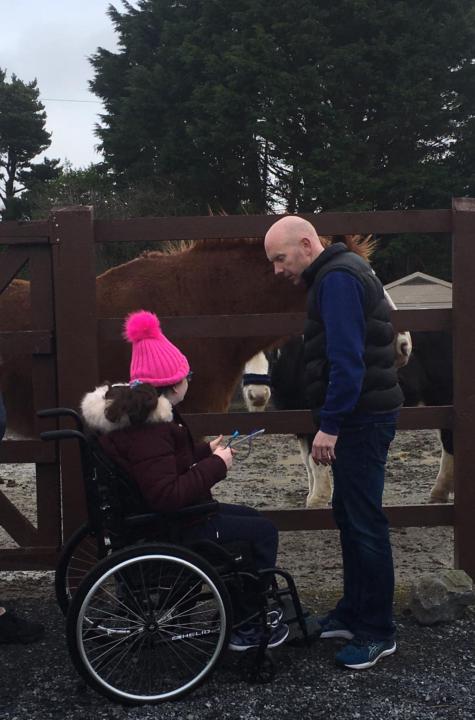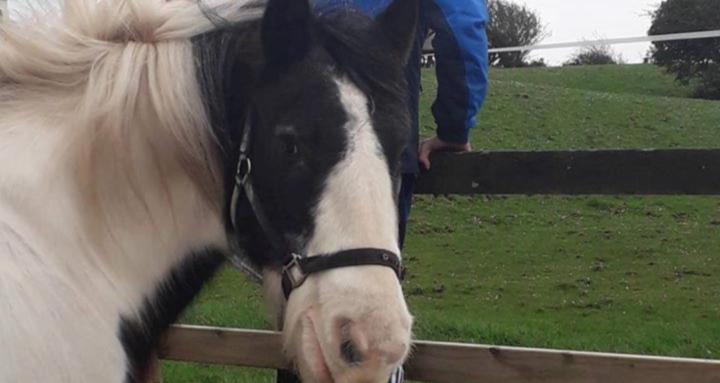
Write something
Pinned
HORSE POWER FOR BUSY BRAINS - new course alert!
A 4-Week Equine-Assisted Learning Program for ADHD and Neurodiverse Minds Now available to coaches for only $39 If you’ve ever wished you could support participants who struggle with focus, impulsivity, overwhelm, emotional regulation, or sensory overload without having to become a clinical specialist… this program is made for you. Horse Power for Busy Brains offers a structured, horse-centred pathway for: - ADHD - autism spectrum presentations - dysregulation - anxiety masking - fidget/flight energy patterns - emotional sensitivity 🟣 Perfect for: youth groups, teens, adults, alternative learners, and anyone who thrives outside classroom norms. 🐎 What Makes It Different? This is not therapy. It’s an equine-assisted learning system that: - uses horse feedback, pacing, and mirroring - teaches calm attention (without shame or correction) - builds self-awareness through movement, rhythm & regulation - creates success experiences immediately (not after years of waiting lists) No diagnosis is required.No labels in session.Just connection, clarity, and achievable steps. 📦 What You Get for $39 - Full 4-week session guide - Coach notes, boundaries, setup, flow - ADHD-friendly activities that are: sensory safe paced, movement-based structured but not rigid - End-of-session reflection prompts - Safety, emotional regulation & horse welfare guidance - Participant completion certificate wording - “What next?” progression options You receive everything needed to deliver confidently — without overwhelm. 🧩 Who This Helps Most Coaches working with: - high-energy learners - easily frustrated teens - participants who shut down or power up - oversensitive or under-responsive nervous systems - neurodivergent adults with burnout, masking, or RSD No clinical language required.Just real horses + real awareness + real growth. 🎯 Outcomes You Can Expect Participants will practice: - attention without pressure - calm body + clear intention - self-regulation through horse feedback - emotional decoding (from “I don’t know” to “Oh, I feel X”) - respectful leadership without dominance - confidence in small, consistent steps

Pinned
Hello New Friends 😊
It’s so lovely to see our community of horse lovers growing 😊 I’m new to Skool, and the concept of telling the world about your accomplishments is quite foreign to me 🤣 I think it’s because I’m from a generation raised to believe that talking about what you’ve achieved was boastful and baaaaad! 😳 So, because we’re not doing THAT anymore, please tell us all about the amazing, talented, beautiful person you are 💕💕💕 Don’t be shy now 😊

WHAT WOULD YOU CHOOSE?
Imagine - you have the opportunity to have not one but TWO luxury items you’ve always wanted. No strings attached at all, at all. Nobody will have less because you have more 😊 But there’s a catch! 😉 One of the items has to benefit YOU alone. Not your family, not people in need, not society - just YOU. What are you choosing?


How and Why Horses Hep People with ADHD
Ground-based activities with horses offer opportunities for developing focus, emotional regulation, social skills, and self-confidence. Horses are naturally responsive and non-judgmental. Simply being in their company is highly beneficial for anyone struggling with the impulsiveness, attention span, hyperactivity, and other challenges associated with ADHD and similar challenges. Here's a breakdown of specific equine-assisted activities and how they help with ADHD: 1. GROOMING AND CARE How It Helps: Promotes Focus and Mindfulness: Grooming a horse requires attention to detail and sustained focus, helping individuals practice slowing down and concentrating on the task at hand. Encourages Responsibility and Routine: The consistent routine of grooming helps create a predictable and structured environment, which can be especially beneficial for those who thrive on routine. Calming Effect: The physical act of brushing and touching the horse can be soothing, helping to reduce hyperactivity and promote calmness. Why It Works for ADHD: Children and adults with ADHD often benefit from hands-on, tactile activities that engage their senses and require full-body involvement, making grooming an ideal way to channel their energy positively. 2. LEADING AND FOLLOWING EXERCISES How It Helps: Builds Self-Regulation and Impulse Control: Leading a horse requires the person to remain calm and focused. The horse will respond to the leader’s energy, which teaches individuals how to manage their own emotions and reactions. Enhances Communication Skills: These exercises help participants practice giving clear, non-verbal signals and receiving feedback from the horse, improving communication and awareness of how their actions affect others. Develops Leadership Qualities: Leading a horse boosts confidence and self-esteem, as individuals see their ability to influence and guide a large, responsive animal. Why It Works for ADHD: These exercises provide immediate feedback, helping individuals recognise and adjust their behaviour quickly. It’s an engaging way to teach them how to be present, control impulses, and lead confidently.
3
0

1-30 of 39
powered by

skool.com/horses-connect-training-7883
Join today as a founding member — free for a limited time — and help shape the future of professional equine-assisted services worldwide.
Suggested communities
Powered by
